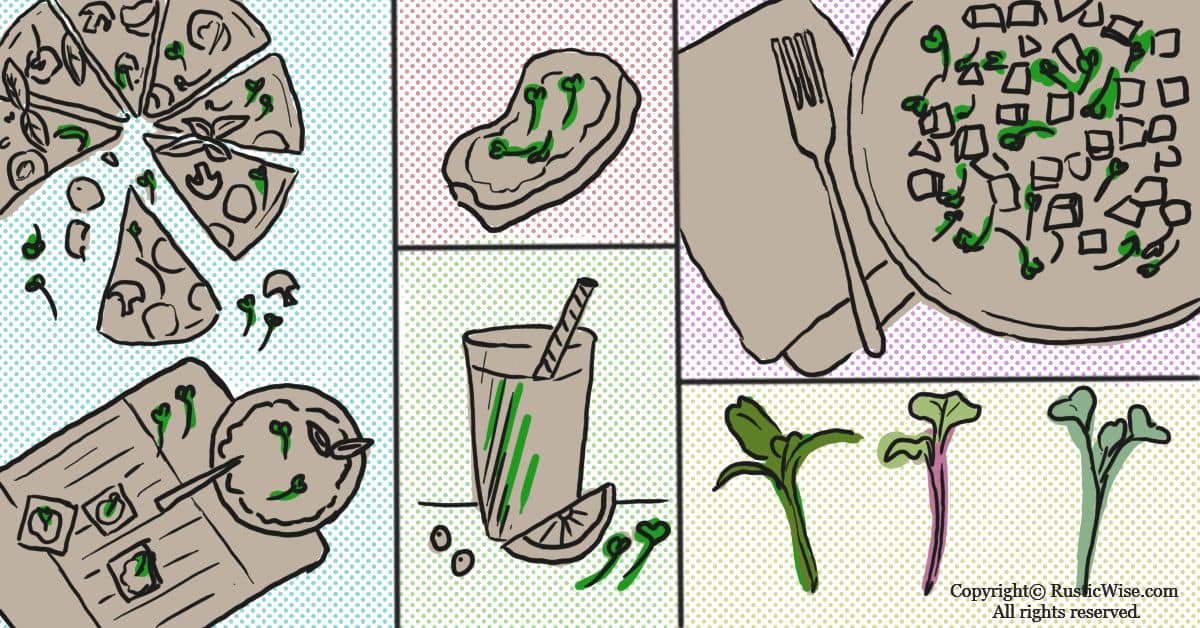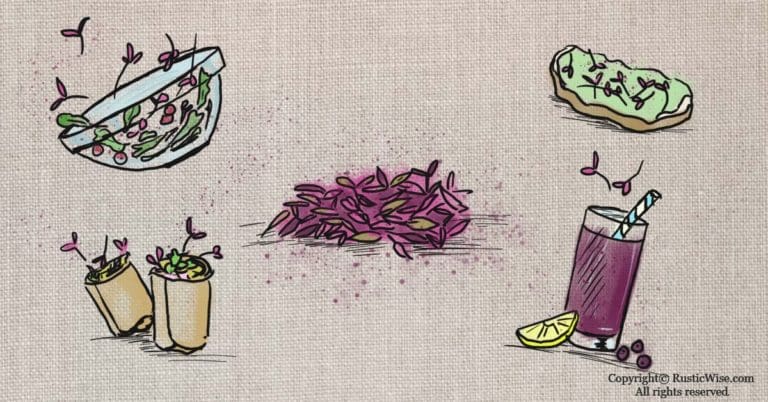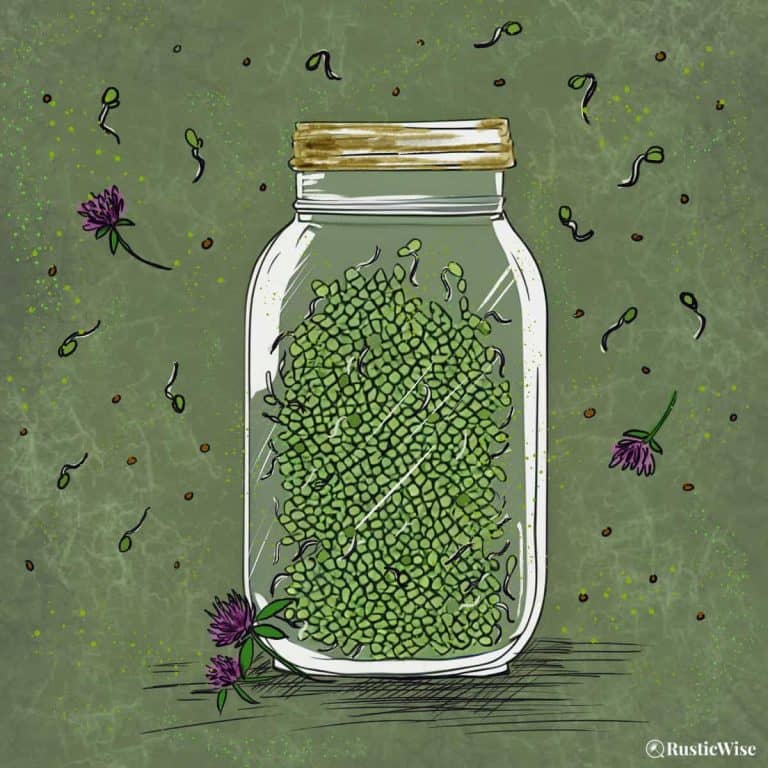How Do You Eat Microgreens: Recipes, Flavor Profiles and Pairings
If you’re looking for a new way to eat your vegetables, microgreens might be just what you need. If you don’t know where to start, you might be wondering, how do you eat microgreens? We have a few recipes ideas, flavor profiles, and suggested food pairings. These little gems are great in salads, garnishes and as smoothie add-ins. They can also be eaten raw or cooked. No matter how you use them they taste fresh and delicious!
Microgreens are easy to grow at home, but what are their benefits? These tiny green plants pack a big punch. Although different microgreens have different nutritional content, most provide an excellent source of vitamins A and K, antioxidants, protein, and iron. They are also low in calories and perfect for those looking to lose weight.
We’ll show you how eating microgreens can be fun, tasty and healthy. You don’t have to be an expert gardener or chef—just some creativity will do the trick! Whether it’s garnishing a salad or adding them into smoothies, these little greens add flavor without taking over your meal.
What exactly are microgreens?
Sprouts and microgreens are two terms you often hear, but it’s important to note that they are not the same thing.
Microgreens are actually tiny plants that are grown in soil and harvested when only a couple of inches tall when they’re at their peak nutrition. When harvested, microgreens are trimmed just above the soil line leaving the roots in the growing medium. You can grow microgreens from the seeds of vegetables, herbs, grains and legumes.
Sprouts on the other hand don’t grow in soil. Instead, they are seeds that have been soaked in water, most commonly in a glass mason jar, or tray sprouter. You eat sprouts in their entirety: seed, root, and shoot.
Common sprouts are mung bean and alfalfa. For the purposes of this article, we’re just focusing on microgreens.
Microgreens can be found at most grocery stores these days. You can also find them at local farmers’ markets. Or, if you’re so inclined, you can grow them at home. Check out our article on growing microgreens indoors.
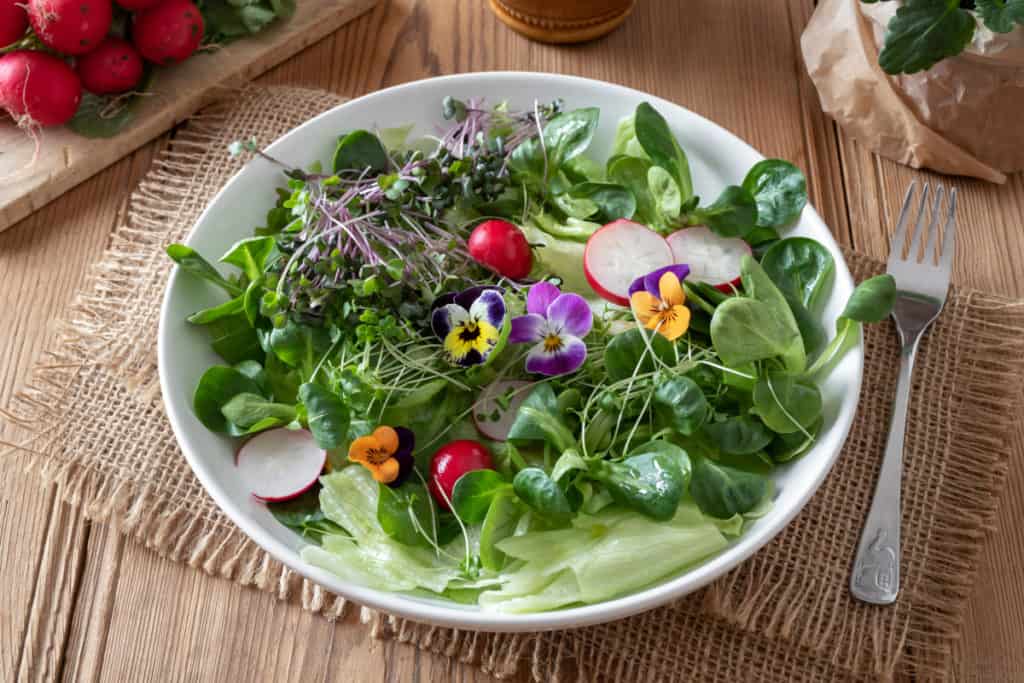
Credit: Yay Images
Preparing microgreens
Harvested microgreens should be kept in the fridge for up to one week. When handling microgreens, tread gently; they have fragile stems and leaves. Some people like to loosely wrap a paper towel or clean dish rag around microgreens before placing in a sealed container or plastic bag in the fridge.
Water or moistness drastically shortens the shelf life of microgreens. When storing them, ensure they are dry. When you’re ready to eat them, give them a quick rinse with water first.
Flavor profiles of common microgreens
Here’s how to eat and enjoy microgreens.
Table: Microgreens Flavor Profiles and Food Pairing Suggestions
| Microgreen | Flavor Profile and Notes | Food Pairing Suggestions |
|---|---|---|
| Amaranth, red | Earthy, mild, and sweet with a hint of grassiness. Slightly crisp and tender texture. Doesn’t stand up well to heat. | Pair with green apples, carrots, oranges, peppers, onions, and seafood. |
| Arugula | Tastes similar to mature arugula: slightly peppery, nutty, and a hint of tanginess. Velvety texture. | Pair with savory dishes; cheese (blue cheese, feta, parmesan); nuts, balsamic vinegar with salad; fruits (berries, citrus, and melons), meat, poultry, and seafood. Use in pesto. |
| Basil | Tastes like basil: a mixture of sweet and savory, a dash of pepper and a mild citrus note (depending on the variety). | Use as a garnish for sweet or savory dishes including pesto, pizza, salads, and desserts. Pairs well with cabbage, tomatoes, cheese (parmesan and mozza), pine nuts, peaches, and rosemary. |
| Beet (Bull’s Blood) | Tastes like beets: mild, sweet, and earthy. Tender texture. | Pairs well with citrus, root veggies, chives, topped on avocado toast, feta and goat cheese, pomegranate, legumes and nuts, mushrooms, and butternut squash. |
| Broccoli | Tastes like a milder version of regular broccoli. Mild, crunchy, with a hint of bitterness common to Brassicas. | Pairs well with eggs (omelettes and frittatas), cheesy dishes. Use in smoothies, sandwiches, and salads. |
| Cabbage, red | Crisp and fresh with a hint of pepper and earthiness. Best served raw, cannot withstand heat. Use as a finishing touch. | Pairs well with apples, avocados, cheese, citrus, garlic, egg dishes, poultry and meat dishes. |
| Corn shoots (aka popcorn shoots) | Surprisingly sweet tasting, like sweet corn-on-the-cob. Slightly crunchy, yet tender. | Use on salads, atop egg dishes, paired with savory dishes for a sweet/savory flavor combination, or as a garnish for desserts. |
| Cress, water | Crisp, yet tender. An interesting bitter-sweet flavor, with a dash of pepper and a citrus finish. | Great on top of soups, in pestos, and many dishes found in Asian and Latin cuisine. Pair with seafood, meat and poultry, cheese (feta, parmesan, and feta), and other leafy veggies. |
| Daikon radish | Crisp texture. This one brings the spice! Peppery and sharp. | Pairs well with savory dishes by adding depth. Goes with many Asian dishes (rice, seafood, sushi, rolls, and stir fry). |
| Kohlrabi, purple | Mild and sweet flavor with a tender texture. Tastes like a cross between cabbage, turnip, with a hint of broccoli. | Use just as you would kale. Mild and versatile enough to use as a salad base. |
| Orach, red or purple | Slightly bitter, tastes like spinach with earthy and salty undertones. Turns less bitter when cooked slightly. | Use as a spinach alternative. Pairs well with savory dishes, egg dishes, as a garnish atop meet or poultry. |
| Mustard | Tastes like spicy horseradish | Use in savory dishes or salads when you wish to add some spice! Use as a finishing touch to cooked dishes like stir fry, roasted veggies, or meat dishes. Complements many Asian, Indian, and Italian dishes. |
| Pea shoots/pea greens | Fresh and sweet, tastes like snow peas. Some say it tastes of springtime. | Pairs well with many Asian dishes, asparagus, citrus, cheese (feta, goat, parmesan, and mozza), eggs, garlic, ginger, seafood, and poultry. |
| Sunflower | A favorite amongst home growers for its mild, nutty and crunchy flavor similar to sunflower seeds. Withstands heat fairly well when used as a garnish on warm dishes. | Pairs well with pumpkin, great fresh on salads, wraps. You really can’t go wrong with this microgreen. |
| Wheatgrass | Tastes almost like you’d imagine grass to taste like: fresh, green, and intense. | Because of its strong taste, wheatgrass is best used in smoothies or juices. If the taste is too strong, try adding some pea shoots to sweeten it. |

Credit: Yay Images
Here are a few other suggestions:
- When you want a splash of color: Purple kohlrabi, red beet, orach, or red cabbage.
- When you want some crunch: Sunflower, pea shoots, and radish.
- When you want to spice things up: Daikon radish, arugula, mustard.
- When you want something mild and versatile: Broccoli, sunflower, pea shoots.
- When you want something sweet: Basil, corn shoots, and pea shoots.
To cook or not to cook…
Microgreens are best when consumed raw, but some people like to lightly cook them. Cooking microgreens will change their flavor profile and texture, so experiment with different cooking times until you find the one that works best for you.
How to sauté microgreens
One easy way to slightly cook microgreens is to quickly sauté them with a little oil over medium heat. Remember that most microgreens don’t stand up well to heat, so aim to keep cook time short.
Add the greens to an empty hot skillet and stir constantly until slightly cooked, about 30 seconds.
When you want more flavor try adding garlic or red pepper flakes for a savory taste; use lemon zest, balsamic vinegar and olive oil for something slightly lighter.
Sunflower microgreens are delicious sautéed with garlic in olive oil for a few minutes—just enough time to wilt the leaves slightly but not too much so they don’t lose their color or shape. Also try sautéing pea shoots.
Did you know that many recipes that you find for “pea shoots” are actually pea tips—the tips and vines from the tops of mature pea plants. Young pea shoots as we’re referring to are more like microgreens.
How do you eat microgreens?
So, how do you eat microgreens? There’s really no right or wrong way. Microgreens are best served raw and fresh; however, you can try lightly cooking them first, or adding to cooked dishes during the last minute or two.
- Blend into healthy microgreens smoothies. You generally just need a handful or two!
- Add to salads. While most microgreens work great as salad garnishes, you can try using a mix of sunflower and pea microgreens as a salad base.
- Add as a tasty addition to cooked dishes at the last minute to prevent over-wilting. Add a handful of microgreens to your pasta sauce or stir-fry at the last minute to keep their freshness.
- Add as a garnish on top of pastries, desserts and ice cream for an extra pop!
- Add some pizzazz to cocktails with a sprinkle of microgreens.
- Use microgreens as a leafy green alternative. Add them to sandwiches, wraps, and tacos.
- Blend into pestos, sauces, and dips.
- Stir into scrambled eggs or omelettes for a green boost.
- Use in soups and stews. Add just before serving, so they don’t wilt during cooking time.
- Use as a colorful garnish for seafood, poultry, or meat dishes.
- Sprinkle on top of pizza.
Microgreens recipes
One of the easiest ways to use microgreens is to make a microgreens smoothie. We’ve compiled a separate article on healthy microgreens smoothies here.
Here’s one of my favorite green smoothies that I make on the regular.
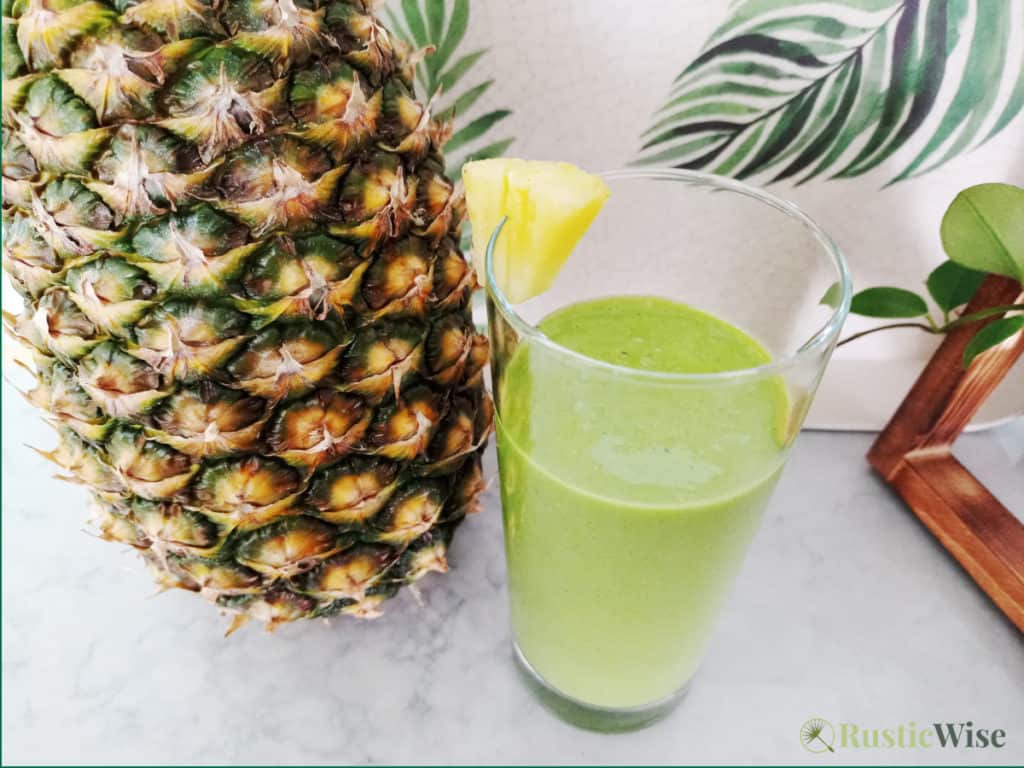
Tropical Delight Smoothie
Servings: 2
Ingredients:
- 2 cups of frozen tropical fruit mix (the one I use has pineapple, mango, strawberry, and peach)
- 1/2 cup yogurt (plain or vanilla)
- 1/2 cup coconut water or pineapple juice
- 1 banana, peeled
- 2 handfuls of microgreens (try sunflower or pea shoots)
- Optional: 2 tablespoons of unsweetened coconut flakes
Combine all ingredients in blender. Blend until smooth. Enjoy!
The following recipes are adapted from the book, Microgreens: How To Grow Nature’s Own Superfood by Fionna Hill.

Credit: Yay Images
Rice Paper Rolls
Serves: 6
- 12 pieces of rice paper
- Large bowl filled with warm water
Filling:
- 1 cup pea shoots microgreens
- 1 cup mustard streaks microgreens
- 1/2 cup pickled ginger slices
- 2 large carrots, cut into matchsticks
- 2 zucchini, unpeeled and cut thinly lengthwise
- 2 green onions, cut thinly lengthwise
- 1 large bell pepper, finely sliced lengthwise
- Optional: sprinkling of evening primrose and borage petals
Tip: Keep two tea towels handy: one damp tea towel nearby to wipe your hands as needed; and another damp tea towel to cover the bowl.
- Dip one rice paper round into the warm water until it begins to soften. Cover with a damp towel to soften for one minute. Gently shake off excess water and place onto a flat surface (a plate or cutting board).
- Place a selection of all the vegetables onto the softened rice paper.
- Roll up tightly. Start by rolling a flap to cover the vegetables, then tuck in both sides. Continue rolling until into finished.
- Garnish with flower petals or incorporate them into the final round.
- Keep rice paper rolls in the fridge under a damp towel until ready for serving.
Strawberries with Basil Microgreens Dessert
This is a fresh and healthy way to enjoy a sweet treat. Basil microgreens elevate the flavors of this dish.
Servings: 3–4
- 2 tablespoons sugar
- 1 cup strawberries either cut into halves or quarters, depending on size
- 1 orange, freshly squeezed
- 4 passionfruit, juice and pulp
- 1/2 a handful of basil microgreens
- Wash and cut strawberries
- Place strawberries into a large bowl. Sprinkle sugar over the strawberries.
- Add the juice from the orange along with the juice of the passionfruit (save the pulp for later). Stir gently to mix.
- Let sit for 15 minutes.
- Add basil microgreens, reserving a few sprigs for the top of each serving.
- Squeeze passionfruit pulp over strawberries. Serve in small cocktail glasses.
Enjoy!
Stuffed Mushrooms with Microgreens
Servings: 3
- 2 cloves garlic, finely chopped
- 1 small red onion, finely diced
- 6 large flat mushrooms
- 2 slices of grainy bread, crumbed
- 1/2 cup toasted sunflower seeds
- 1/2 cup grated cheddar cheese
- 1 handful of microgreens
- 2 tablespoons olive oil
- Salt and pepper to taste
- Preheat oven to 350 degrees Fahrenheit (180 degrees Celsius).
- Lightly sauté garlic and onion for several minutes.
- Meanwhile, cut the stalks from the mushrooms. Chop the stalk finely.
- Mix all ingredients together in a large bowl. Mix until well incorporated.
- Arrange flat mushroom onto a baking sheet.
- Wet your hands and gather enough filling for one mushroom. Squeeze to compact it. Place the filling onto each mushroom. Press down firmly to slightly flatten.
- Bake in over for 15 minutes, or until lightly browned.
- Serve with a generous garnish of fresh microgreens and a drizzle of olive oil.

Author: Theresa Tesolin
Theresa is co-founder of RusticWise. She helps people unleash their inner DIY spirit by encouraging them to get dirty and make or grow something from scratch.

